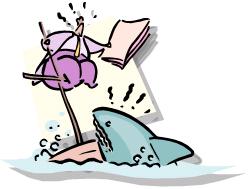By Larry Cassidy, Bob Dabic, Tom Drucker, Ken Keller, Gary Lockwood, Don Pierro, Boaz Rauchwerger, George Walker, Paul David Walker and Lighthouse

By Petr Kratochvil
With the many local/national/global events that we are constantly confronted with, we thought we would ask some well respected business and thought leaders the following question, What Does It Take to Bring More Peace Into Your Life and Others? I think you will find their responses to be very interesting, thought provoking and helpful. We’d love to hear from you as to what your thoughts are on this subject, so please email us at dana@lighthouseconsulting.com. We have also included some ideas at the end of the article on stress management, preparing your thought for the day and mindfulness/meditation.
What does peace mean to you?
Larry Cassidy: When I am at peace, what I am doing, how I am acting and who I am are all aligned with my core values: Be yourself, be trustworthy, do what is right, do your best, never quit, build bridges for others, be kind, love without getting tired and have faith. When I am uneasy, uncomfortable out-of-sorts, it is most often because I am not in sync with my core values. The question which keeps me centered is: In this situation, who will I be?
And when I am at peace, I am in harmony with my circumstances and with others in my life. I am less concerned with a “balanced life” – which implies a constant struggle to rebalance – and more committed to being in harmony.
Bob Dabic: Living as stress free as possible.
Tom Drucker: For years I’ve thought of peace in my life as a state of being. Some call this “inner peace”. I first learned meditation when I was undergraduate at UCLA. About the same time, I learned to control migraine headaches through bio-feedback training. The biggest challenge I have is to remember to keep the experience of gratitude in the foreground and sit still 4-5 times a day. Noticing my breathing helps a lot as well. I’ve learned how to bring “the experience of being peaceful” into my life even when I’m in amidst of an environment that is not necessarily peaceful or calm. It is important to distinguish this state of being for others so I’m not perceived as being disinterested or disconnected from the circumstances around me. I find when I use “this practice” I have a different reaction to the circumstances. I often see more creative options and I come at solving problems in a way I might have not noticed previously. At other times being peaceful just helps me become a better listener because I filter out most of my pre-conceived perceptions.
Ken Keller: Knowing that your loved ones are secure, healthy and happy.
Gary Lockwood: For me, it means a calmness in my head and heart that is not interrupted (much) by negative imagination (worry).
Don Pierro: What peace means to me is appreciating the good things.
Boaz Rauchwerger: Peace to me means doing what we can to make those we love and care about feel important and safe on a regular basis.
George Walker: Peace starts with the absence of conflict but goes beyond that to a quiet certainty that everything happens for the best in the long run.
Paul David Walker: Peace beyond anything I can say exists in the present moment. When we let go of all the frameworks we set-up to protect ourselves, a child-like joy fills our hearts. This joy comes from our essence, which can be covered, but never lost. Once we rediscover this, and let the Life Force enliven our true essence every step is peace. We walk through the world in a deeply authentic manner seeing things as they are, instead of what we think they are.
What do you do to bring peace into your life and others?
Larry Cassidy: For myself, I test what I am doing and who I am being against my values, and adjust. As much as possible, I try to be “in the moment,” to be curious, to listen and to ask rather than tell.
My commitment to others is to offer them respect, to tell them the truth, to believe in and support their hopes and dreams, to love them for who they are and, by being a part of their life, help them to be an even better version of themselves.

By ADARIFLIMAT (pixabay)
Bob Dabic: In addition to praying, I do mini-meditations during the day when I feel stressed (these are 10-second timeouts where I visualize my “peaceful place” and then tell myself my one-sentence affirmation statement (this was learned from a Vistage speaker, Steven Snyder).
Tom Drucker: I’m fortunate that my work of coaching leaders and their teams often allows me to bring order, clarity, meaning, and purpose into the lives of others. I learned early in my life when I was studying with Viktor Frankl that when a person found meaning in their life, they were often at peace. I find this to be as true today as I ever did. This connection with people also brings me inner peace and fulfillment. I’m also fortunate to live with a woman I deeply love. Relationships, while they do take intentionality and effort, bring me a deep source of inner peace and fulfillment. The greatest peace I find is when we are making a contribution to others, so that our relationship and what we do in the world is in some small way making a difference to others and the world that is in need.
Ken Keller: For me, it’s the small things in life that show you care and have listened.
For my wife, it is bringing home a cup of coffee after our long day. I also leave her quarters so she has something to tip her friends at Starbucks in the morning. It means emptying the dishwasher in the morning after I have started the coffee, and making the bed.
For my son and daughter-in-law, it means being available to them when they ask for our help and knowing they are strong for each other and not interfering with their life together.
For our two granddaughters, it means being an example for them and showing unconditional love and support, which can be anything from taking them to IHOP for pancakes, reading a book with them or taking them for a drive for ice cream, laughing all the way.
Gary Lockwood: The way I try to achieve this is: 1) Decide each morning that I’m going to be happy today and that today is going to be a good day. 2) Look for the positive in all situations and in all people.
Don Pierro: What I do to bring Peace is to forgive and send and receive love.
Boaz Rauchwerger: To bring peace into my life I make sure that I have some quiet time on a daily basis. I also like to read biographies, which help take me out of my world and teach me how others have achieved greatness in their lives. I make an effort to bring peace to others by being genuinely interested in them and being a very good listener.
George Walker: Find time for quiet introspection [could be called meditation or prayer]. Be a calm reassuring presence when others are in turmoil – just be there for them.
Paul David Walker: This understanding is the first phase in my work with leaders and individuals. We must know ourselves first, as many prophets and wise people have said over the centuries.

By John Hain
We hope you have gained some wonderful ideas for finding and expanding peace in your life. I have been learning about meditation and mindfulness to focus on the moment – to be fully present. Recently, I saw a segment about Andy Whitfield who had a difficult and heart breaking battle with cancer. One way that he and his wife came to terms with his situation is to get tattoos that said, “Be Here Now”. I find those words to be so helpful. Whenever I’m doing something – whether a walk, folding laundry, etc. I try to stay in the moment with those words and focusing completely on the sensations, the moment, the breath of whatever I’m doing. It is so easy to let the mind wander off and we can’t really appreciate all that is happening in the moment. If I get off track… I say those words to myself: Be Here Now.
– Ellen Borowka, MA, Lighthouse Consulting Services
Here are some other ways to find and expand your peace:
Stress management ideas
https://lighthouseconsulting.com/managing-stress/
https://lighthouseconsulting.com/feeling-burdened/
Preparing Your Thought for the Day by Paul David Walker
https://lighthouseconsulting.com/preparing-your-thought-for-the-day/
MARC (UCLA Mindful Awareness Research Center)
Great ideas for guided meditation/mindfulness – be sure to check out their video for introduction to meditation
http://marc.ucla.edu/default.cfm?id=1
For a limited time, Headspace (meditation app) is offering free subscriptions to 1) anyone who is unemployed (https://www.headspace.com/unemployed) and 2) anyone who lives in LA County (https://help.headspace.com/hc/en-us/articles/360046874573-Headspace-for-Los-Angeles-County-Residents).
Calm is also a great app, they have a variety of meditations on youtube and free resources too (https://blog.calm.com/blog/free-resources). Hope this helps you to find some peace and support.
Permission is needed from Lighthouse Consulting Services, LLC to reproduce any portion provided in this article. © 2020 This information contained in this article is not meant to be a substitute for professional counseling.
Larry Cassidy has been a Group Chair with Vistage International (formerly TEC International) for over 28 years. He works monthly with more than 40 Southern California executives, in two chief executive groups and one group of key executives. Larry has facilitated over 1400 executive advisory group meetings, and has participated with chief executives in over 13,000 coaching discussions regarding all aspects of their businesses. Larry has received recognition for his work as a Group Chair, including multiple Chair Excellence Awards, the Star Award, designation as a Master Chair, and the Don Cope Award, the highest recognition given to active Chairs. You can contact Larry by phone (714) 424-9443 (work) or email larry.cassidy@vistagechair.com.
Bob Dabic is a “Master Chair” (business/life coach) of Vistage Chief Executive & Key Executive Groups in the California Counties of Orange, Los Angeles & Riverside, a “Best Practice Chair” responsible for chairs & members in the Los Angeles area, & a Lead Trainer of new & existing chairs. In addition, Bob is CEO (Coaching Excellence Officer) of DabiCoaching, a multi-purpose coaching/training/consulting company. In this role, Bob will also do coaching of clients, as well as conduct numerous workshops on the topics of: vision/mission/values creation, strategic planning, goal setting, leadership, communication, delegation, finance, selling, process improvement (TQM), and career development planning. Prior to taking on the above roles, Bob was a successful owner, president & CEO of several airport and aerospace equipment design & manufacturing companies over a 30-year period. For the last 6½ years in the day-to-day operating role, he was a member of a Vistage CEO group. Bob was also director of marketing for an alarm manufacturer and worked in a sales role with Xerox Corporation right after graduating from California State University at Long Beach with a B.S. Degree in Business Administration/ Marketing. Please feel free to contact Bob at (949) 376-8600 or bob.dabic@vistagechair.com.
Tom Drucker is President of Consultants in Corporate Innovation and Vice President of Transitioning to Green. He is unique because he integrates the principles of positive psychology and advances in Mindfulness with best practices of global business, including Sustainability and Innovation. Today he serves as a trusted advisor on Innovation, Sustainability, Leadership and Governance to owners and leaders of every type and size of business: helping them grow profits, solve people and business problems, bringing new ideas to market by designing off sites and strategic planning sessions or having really powerful conversations. He began his business career working directly for the Chairman of Xerox Corporation (the only person who could keep Tom away from the beach for 15 years). During that time, he ran a global division focused on developing strategies and designing new leadership models for the corporation that Xerox is today. Tom received his first graduate degree in Clinical Psychology from UCLA while working with and being mentored by Viktor Frankl in Vienna and then by Abraham Maslow, who Tom says, pushed him to go to UCLA’s business school. There he pursued a PhD studying Change Management, his dissertation was on which leadership style was best to sustain long-term organizational change. You can contact Tom by email tom@corporateinnovation.com or phone 310-306-2066.
Ken Keller is a syndicated business columnist focused on the leadership needs of small and midsize closely held companies. Feel free to email Ken at kenkeller@sbcglobal.net or call or text at 661-645-7086.
Gary Lockwood specializes in helping Chief Executives, entrepreneurs and business professionals achieve breakthroughs in their business. Contact Gary at 951-642-9576 or Gary@BizSuccess.com.
Don Pierro has been coaching and consulting to leaders and teams in businesses and non-profits for more than thirty years. He was the owner and president of three private companies in three different industries all of which were successfully developed and acquired by larger firms. In 2004, Don founded Empower Lab Coaching Group to fully engage his passion for catalyzing leaders to create a strategic vision and inspiring them to accomplish it. Don is a Chair with Vistage International providing mentoring and facilitation for peer advisory groups of CEO’s and business owners. He has been successful across a variety of industries and professions facilitating change and leadership development. Don is a board certified coach with the Center for Credentialing and Education (CCE), and a certified transformational trainer with the Leadership Training and Development Group (LTDG). His education includes a Masters Degree in Leadership from Azusa Pacific University, a Coro Fellowship in Public Sector Leadership, and a BA in economics from UCLA. You can contact Don by phone 626-385-7155 or email don.pierro@vistagechair.com.
Boaz Rauchwerger is an internationally-known speaker, author, consultant and author. A former television producer, newscaster, and advertising executive, he is the Speaker of the Year for Vistage International, the world’s largest organization of CEOs. Feel free to contact Boaz by phone 619-723-3007 or email BoazPower@aol.com.
George Walker, Vistage Chair [Coach for Business Owners and Executives] with extensive experience as an operations manager [oil refining] and a corporate executive [health environment safety and public policy for Fortune 500 Integrated Oil Company] Specialties: Working with business owners to take their businesses to the next level, Dealing with diverse stakeholders on environmental issues, organizational design, hiring the right people, setting goals collaboratively to maximize success of the enterprise. An engineer by education, George had a 36 year career with Unocal. He spent 24 years in the refining division followed by 12 years as a corporate officer. He retired from Unocal as Vice President for Public Policy, Health, Environment & Safety. After retirement from Unocal, George had consulting assignments with the Nature Conservancy and Pacific Gas & Electric. Now, he devotes his time and energy to coaching business owners – helping them to grow their businesses and find work/life balance. He uses the Vistage model that involves Group Meetings as well as individual coaching sessions. You can contact George by phone (310) 990-9003 or email george.walker@vistagechair.com.
Paul David Walker, CEO and Founder of Genius Stone Partners, is one of the early innovators of leadership consulting and coaching at the executive level. For more than thirty years, he has successfully guided the CEOs and senior executive teams of such Fortune 500 and mid-sized companies as New York Life, Mutual of Omaha, Chase GIS, Finance One, VONS Grocery, Pacific Mutual, Rockwell International, Conexant Systems, Harrods, Anne Klein, Union Pacific, StarKist, The City of Long Beach, Long Beach Fire Department, Culver Studios, Shout Factory, Lazy Dog Restaurant and Bar, NTS, Archstone Foundation, The Queen Mary and many other thriving organizations. He is author of Invent Your Future-Starting With Your Calling and Unleashing Genius: Leading Yourself, Teams, and Corporations. He specializes in building teams of leaders committed to each other’s success and the success of the business. Feel free to contact Paul by email pauldavidwalker@geniusstone.com or his cell 562-233-7861.
If you would like additional information on this topic or others, please contact your Human Resources department or Lighthouse Consulting Services LLC, 3130 Wilshire Blvd., Suite 550, Santa Monica, CA 90403, (310) 453-6556, dana@lighthouseconsulting.com & our website: www.lighthouseconsulting.com.
Lighthouse Consulting Services, LLC provides a variety of services, including in-depth work style assessments for new hires & staff development. LCS can test in 19 different languages, provide domestic and international interpersonal coaching and offer a variety of workshops – team building, interpersonal communication and stress management.
To order the books, “Cracking the Personality Code” and “Cracking the Business Code” please go to www.lighthouseconsulting.com.
Our Sino-Am Leadership Program helps executives excel when stationed outside their home country. American managers in Asia and Asian managers in America face considerable business, personal, and leadership challenges because of the cultural differences. This unique program provides personal, one-on-one coaching. For more information visit, https://lighthouseconsulting.com/performance-management/talent-development/sino-american-management-style/.
 2. Holidays are to be Shared
2. Holidays are to be Shared






 Some of this may sound like common sense. Yet, if common sense was so common, then we wouldn’t find ourselves in the trouble we do. Many times, we just want to get rid of stress, much like we try not to feel sadness or anger. However, stress and fear are a natural and necessary component of life. Stewart Emory once said, “The absence of fear is not an option that is available to most people. People are looking for that, but that is just not an option. The difference between people who are really making it in the world and the people who are not is simple: The people who are making it in the world are making it and they have fear.” We can’t eliminate stress, but we can find ways to balance and use stress to achieve our goals and dreams in life.
Some of this may sound like common sense. Yet, if common sense was so common, then we wouldn’t find ourselves in the trouble we do. Many times, we just want to get rid of stress, much like we try not to feel sadness or anger. However, stress and fear are a natural and necessary component of life. Stewart Emory once said, “The absence of fear is not an option that is available to most people. People are looking for that, but that is just not an option. The difference between people who are really making it in the world and the people who are not is simple: The people who are making it in the world are making it and they have fear.” We can’t eliminate stress, but we can find ways to balance and use stress to achieve our goals and dreams in life.
 They were wondering if I would be interested in being trained to be a tour manager and lead groups across the country. This turned out to be an amazing opportunity to meet a lot of people and to have fun and travel the US and Canada. It was interesting to me how this prospect came about. I was first inspired by what others did when they went to hear Jesus speak and they were fed. When I read and studied this bible passage, I too was fed by fulfilling a human need. It all happened so fast. Insight, inspiration and my summer need for a job was met.
They were wondering if I would be interested in being trained to be a tour manager and lead groups across the country. This turned out to be an amazing opportunity to meet a lot of people and to have fun and travel the US and Canada. It was interesting to me how this prospect came about. I was first inspired by what others did when they went to hear Jesus speak and they were fed. When I read and studied this bible passage, I too was fed by fulfilling a human need. It all happened so fast. Insight, inspiration and my summer need for a job was met.
 Change is in the Air: It is good time to consider the following quote from Albert Einstein: “The significant problems we have today cannot be solved at the same level of thinking with which we created them.” We need to be receptive to consider how we have done things in the past and when things need to change in order to stay current. Remember the Rolodex cards? Even the good old fashioned light pole is being changed out for the more modern version that does not pollute, uses solar electricity, notifies central headquarters through a wireless device when it needs service, and is quicker and less expensive to install.
Change is in the Air: It is good time to consider the following quote from Albert Einstein: “The significant problems we have today cannot be solved at the same level of thinking with which we created them.” We need to be receptive to consider how we have done things in the past and when things need to change in order to stay current. Remember the Rolodex cards? Even the good old fashioned light pole is being changed out for the more modern version that does not pollute, uses solar electricity, notifies central headquarters through a wireless device when it needs service, and is quicker and less expensive to install. Create a Communications Plan: Here is a team exercise to focus on communication – briefly answer the following questions:
Create a Communications Plan: Here is a team exercise to focus on communication – briefly answer the following questions: clearly:
clearly:



















